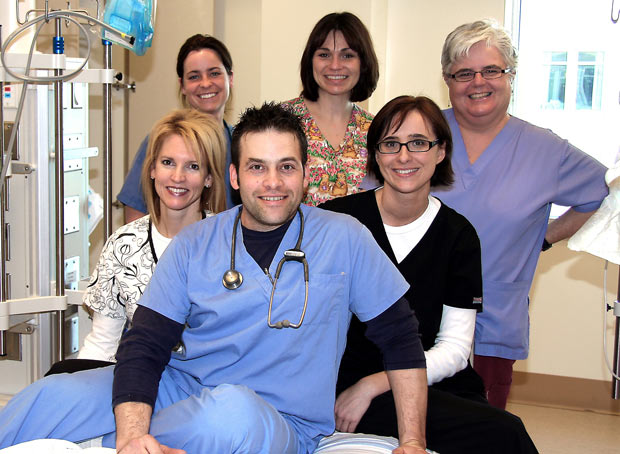

THUNDER BAY- Health News – Are you looking for a career that offers job security, the opportunity to make a difference in people’s lives every day, continuing opportunities to advance your skills and exceptional wages, benefits and pension?
As baby boomers retire, there is a growing demand for professionals in many areas of healthcare. Job prospects for many health professionals in Ontario are excellent and demand for health care services is only expected to increase.
Those interested in working in the health care field will find many career options to explore. In addition to physicians and nurses, there is a wide range of career possibilities, from diagnostic imagining technologists and respiratory therapists to social workers.
[sws_pullquote_right] Clinical Careers Open House takes place Wednesday, January 16 from 6:00 pm to 8:00 pm in Auditorium A on the 3rd level of the Health Sciences Centre. This event is free and light refreshments and parking passes will be available for those who attend. [/sws_pullquote_right]
Young people in their final years of high school who have not yet decided on a career choice or those considering a second career in health care are invited to attend a Clinical Careers Open House on Wednesday, January 16, hosted by Thunder Bay Regional Health Sciences Centre (TBRHSC).
Representatives from the various departments and clinical professions that work at TBRHSC will be on hand to answer questions about what it is like to have a career in healthcare.
“We want to expose them to the fact that healthcare professionals are not only doctors and nurses,” says Meghan Beach, Human Resources Clinical Recruiter. “There are many other professions such as dietitians, pharmacy technicians, radiation therapists and lab technicians. You don’t have to go to school for seven years.”
The Forensic Program at TBRHSC is just one department that will be represented at the open house. “Forensic psychiatry is a specialized branch of psychiatry where the medical and legal worlds overlap,” says Rose Lazinski, Manager of the Forensic Program. “This subspecialty involves the application of mental health expertise in legal contexts.”
Care for patients in the Forensic Program is provided by an interprofessional team that includes psychiatrists, nurses, psychologists, social workers, occupational therapists, psychometrists and therapeutic recreationists. “Each profession brings a specialized service and expertise to our patients that, in the end, provide a holistic approach to the patient’s recovery,” Lazinski says.
Representatives from post-secondary institutions will also be available to answer questions about postsecondary healthcare program options and admission requirements.
“The goal of this event is not only to provide valuable information about healthcare in general and at TBRHSC, but also to hopefully spark an interest in those who attend to pursue a healthcare career choice,” says Beach. “Healthcare will continue to be an industry in demand and we want TBRHSC to be an employer of choice in Thunder Bay.”
With more than 2,500 employees, TBRHSC was at the top of the list of major employers in the Thunder Bay Community Economic Development Commission’s 2010 report.
Donna Faye
Thunder Bay Regional Health Sciences Centre is a state-of-the-art acute care facility serving the healthcare needs of people living in Thunder Bay and Northwestern Ontario. An architectural showpiece situated on a landscaped site of nearly 70 acres, the Regional Health Sciences Centre is a stunning award-winning design that is functionally efficient. There are 375 acute care beds. The spacious patient rooms each have a large shower with wheelchair accessible washrooms. The facility is air-conditioned with special “negative pressure” rooms strategically located to accommodate people who may be suffering from a communicable disease.
Leading-edge technology is apparent throughout including linear accelerators in Cancer Care where TBRHSC has two of only a few of its kind found in the world. To this end people will come to Thunder Bay to be trained on the use of this kind of equipment. As well, articulating arms are featured in the Critical Care unit, Operating Rooms, and Emergency Department Trauma Rooms. This advancement in technology permits physicians and caregivers to work with patients with great ease. Besides hard-wired and wireless technology throughout, Diagnostic Imaging uses Picture Archival Computer Systems to record the images from the MRI, 16 and 10 slice CT Scanners and simulators, and other DI equipment which permits easy transportation of files among radiologists and specialists anywhere so they may view and assess images. The ability to store and move the data of a patient from an Electronic Medical Record makes the region’s hospitals of Northwestern Ontario a virtual library whereby physicians and “need to know” care providers can assist with patient care in an instant.






